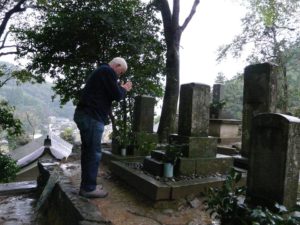
(excerpted from Samurai Assassins)
Until he would conceive of the [revolutionary] Tosa Loyalist Party, Takéchi Hanpeita was first and foremost a swordsman—but the Japanese sword he wore at his side, nearly three feet long, represented “his belief in the Imperial Country,” wrote his earliest biographers. . . . A Confucian scholar and martial artist who also excelled in the arts of poetry, painting, and calligraphy, the extraordinarily strong-willed Takéchi was a stoic whose adherence to bushidō had become the stuff of legend even before his stunning seppuku in …1865. Around six feet tall, he had an imposing physique. His portrait by an unknown artist depicts a meticulously groomed, handsome man of a light complexion, long nose, and slightly protruding lower jaw, who “was praised by the local people and honored and revered by his students.” He rarely showed emotion, neither joy nor anger, while his large, piercing eyes shone with a distinctive brilliance. So firm of character was he, that his “gaze shot right through a man,” recalled fellow Tosa Loyalist Sasaki Takayuki, a future court chamberlain and member of Emperor Meiji’s Privy Council. But perhaps Takéchi’s most distinguishing trait was sincerity—that cardinal virtue that ranked with courage, loyalty, and honor as the true measure of a man.

(Photo shown above is at Hanpeita’s grave in Kochi, November 2015.)
Takéchi Hanpeita is the focus of Part II of my forthcoming Samurai Assassins, to be published by McFarland in spring 2017.

